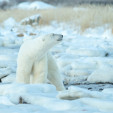Marian and I just returned from the frozen north of Manitoba where we photographed Polar Bears, Arctic Foxes, Caribou and Ptarmigan at Seal River Heritage Lodge on the banks of Hudson Bay. And on two occasions we had extraordinary opportunity to enjoy and photograph the magnificent Northern Lights!
Our trip was led by Master Photographer Chas Glatzer and was a wonderful chance to catch up and learn from one of the top wildlife photographers in the world. Also made many new friends, outstanding photographers from as far away as Spain-all passionate about wildlife and conservation. Also was terrific hooking up with Gari Kitchen, a friend from Georgia with whom I photographed eagles in Alaska a while back.
Weather was cold in our location about 40 miles north of Churchill with the low of -30F and windchill bringing it to -50F. However we had the heavy clothes and other than our hands getting frozen in the brief moments we had to take our gloves off to make camera settings, we were actually comfortable.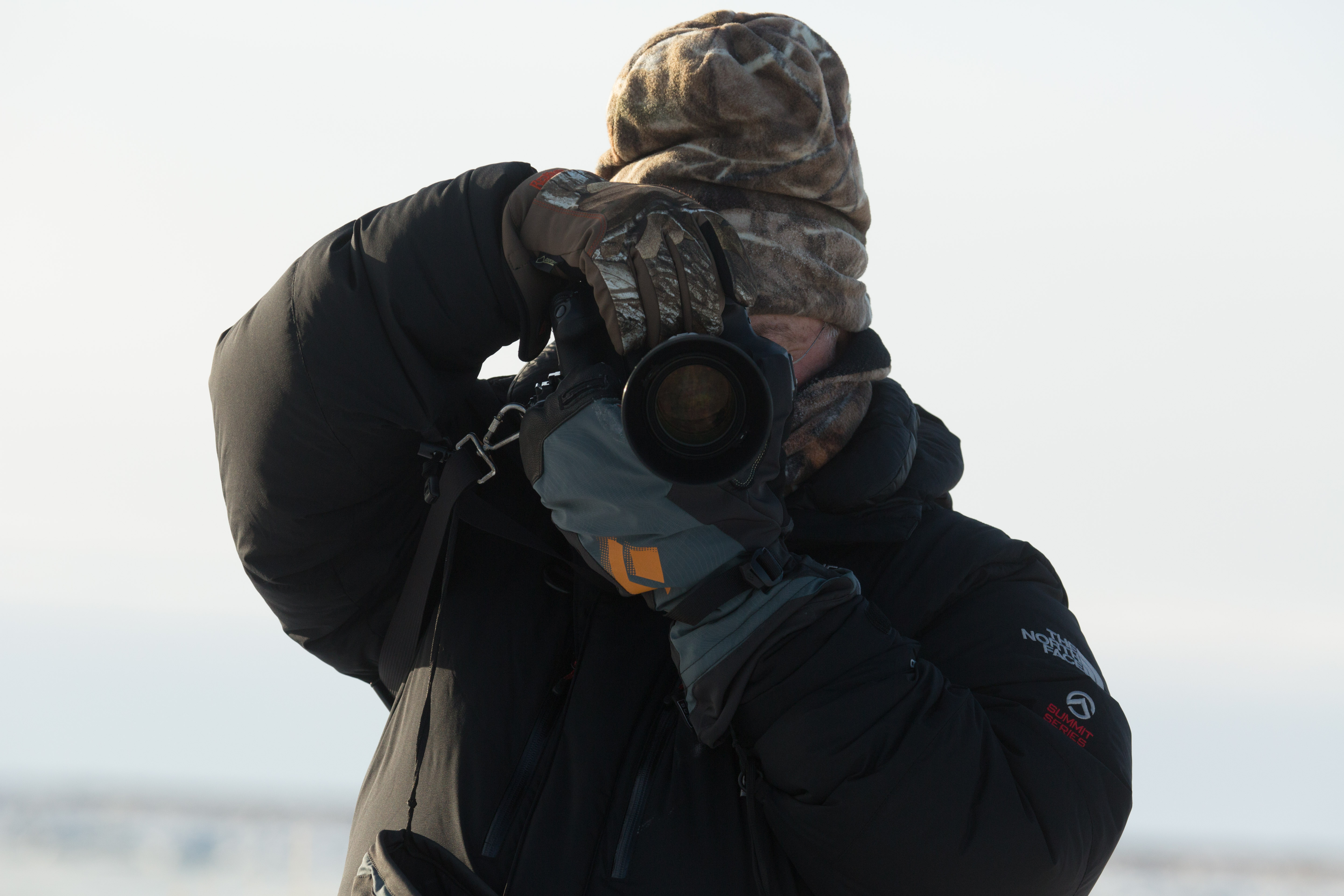
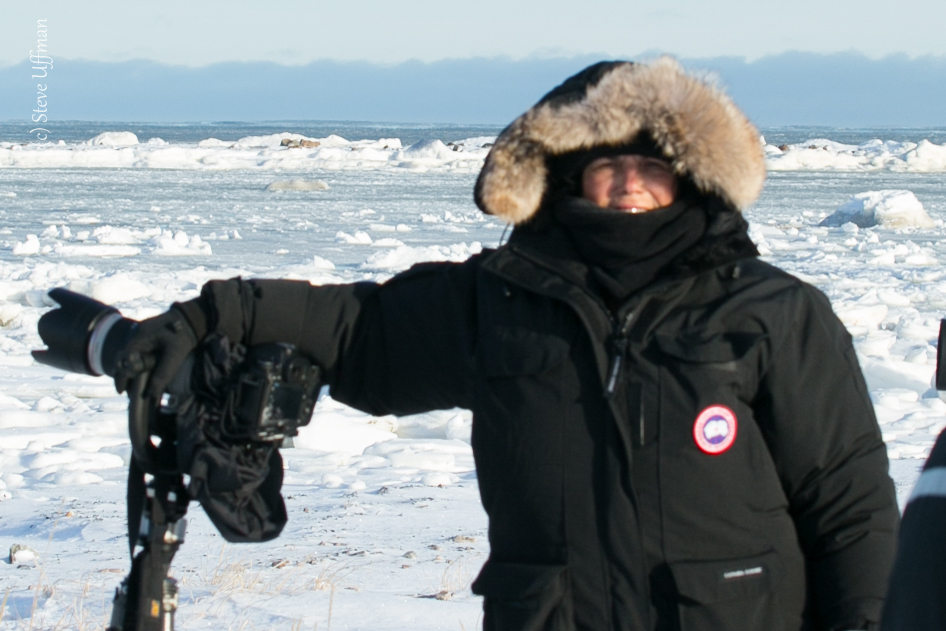
We flew into to Churchill where the Churchill Wild folks that operate Seal River Heritage Lodge (among others) had a small Otter aircraft that we quickly loaded and flew north-landing on their private airstrip on the edge of Hudson Bay. The Seal River Heritage Lodge is a wonderful place operated by Mike and Jeanne Reimer. Their operation is first class, family operation with wonderful hospitality, food, guides and of course wildlife.
I will break the trip report in segments to cover polar bears, Arctic Foxes, Caribou, Ptarmigan and the Northern Lights. This blog segment will focus only on the Polar bears.
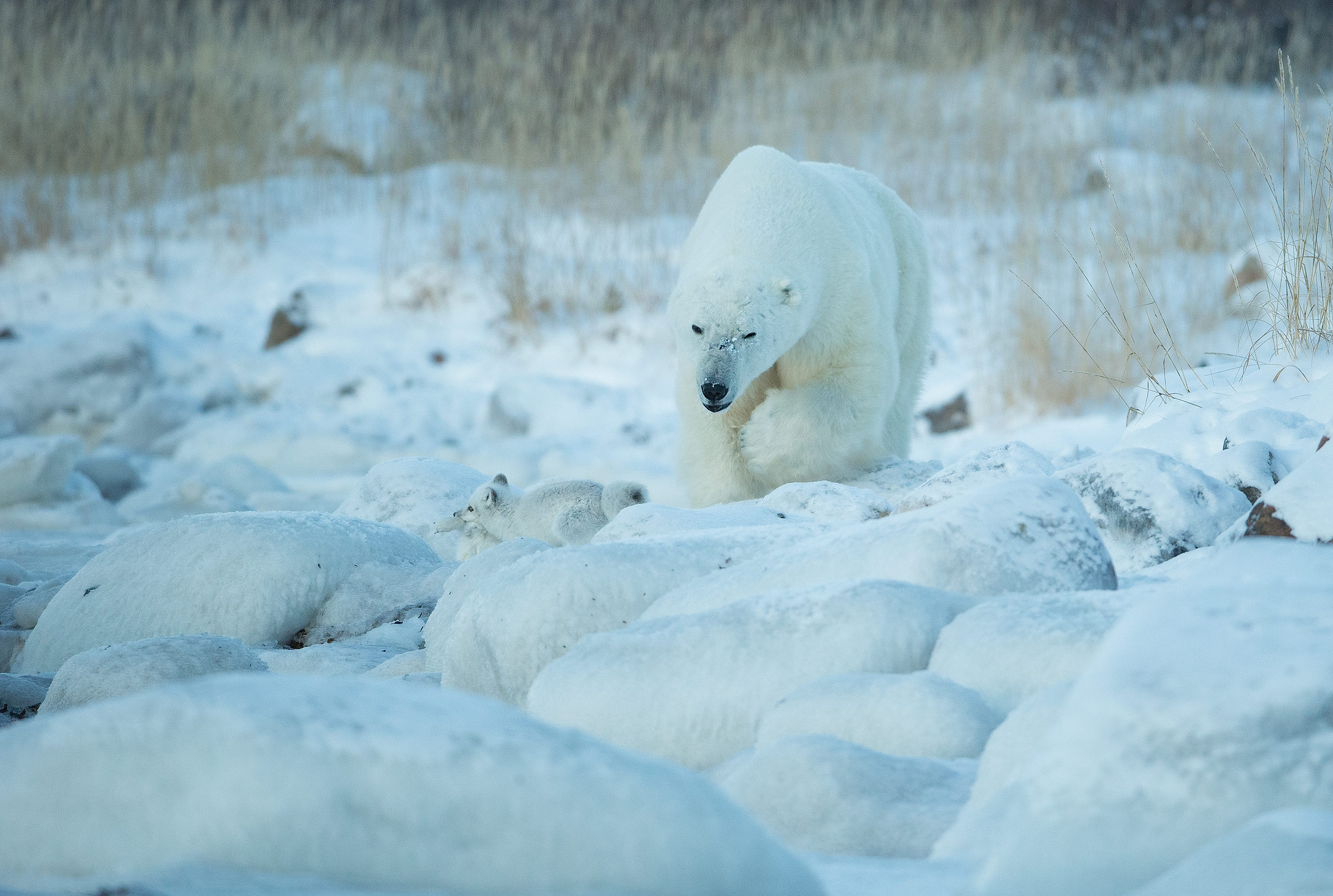 This image contains 3 of the animals we came to photograph all in one image. The polar bear which is eyeing an Arctic fox which is fleeing with its dinner-a Ptarmigan that it had caught. If only a caribou would have been in the background!
This image contains 3 of the animals we came to photograph all in one image. The polar bear which is eyeing an Arctic fox which is fleeing with its dinner-a Ptarmigan that it had caught. If only a caribou would have been in the background!
This image also illustrates another interesting fact about polar bears. Polar bears paws can be up to a 12 inches across. Notice the bear’s left paw or right as you are viewing it. (You can click on the image to get a larger view and then back arrow to return) The massive paws as you can see in the image are very well adapted to treading through the ice and snow. Their claws are up to 2 inches and are curved to hold prey.
October and November are prime times to view polar bears as the bears begin their move from habitat on the tundra North to what is referred to as seal-hunting territory. That territory is the pack ice that forms over Hudson Bay every winter. The bears then go out on the ice, use their superior senses and takes seals for their nourishment.
What we expected to see were bears on the move and we were not disappointed as we saw a bear near the lodge moments after we arrived. 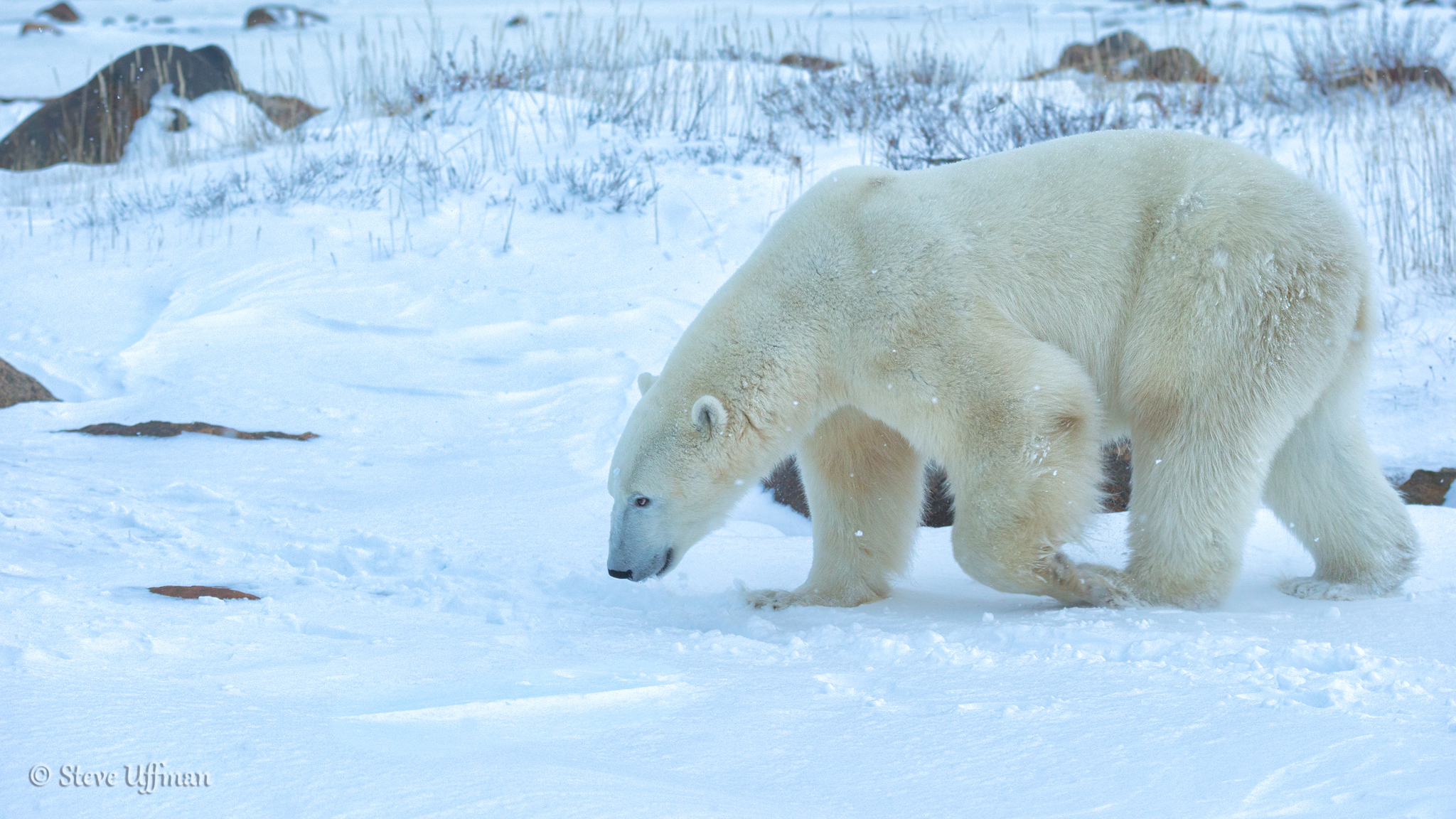 Notice the silhouette of the polar bear is quite different than other bears. Long legs, long neck are all vital to its ability to swim and poke its head into holes in the ice to grab seals among other things.
Notice the silhouette of the polar bear is quite different than other bears. Long legs, long neck are all vital to its ability to swim and poke its head into holes in the ice to grab seals among other things.
The bear circled the lodge and then decided to take a quick nap by the bay’s edge. Hurriedly, we unpacked our gear, set our exposure using spot metering of +2 or +3 EV off the bright snow and began firing away. Snowfall made it more difficult as the contrast was low. Since the camera auto focus systems use contrast to establish focus, single point focus was problematic. As Chas suggested, sometimes multi point would be the ticket and in this case it was. 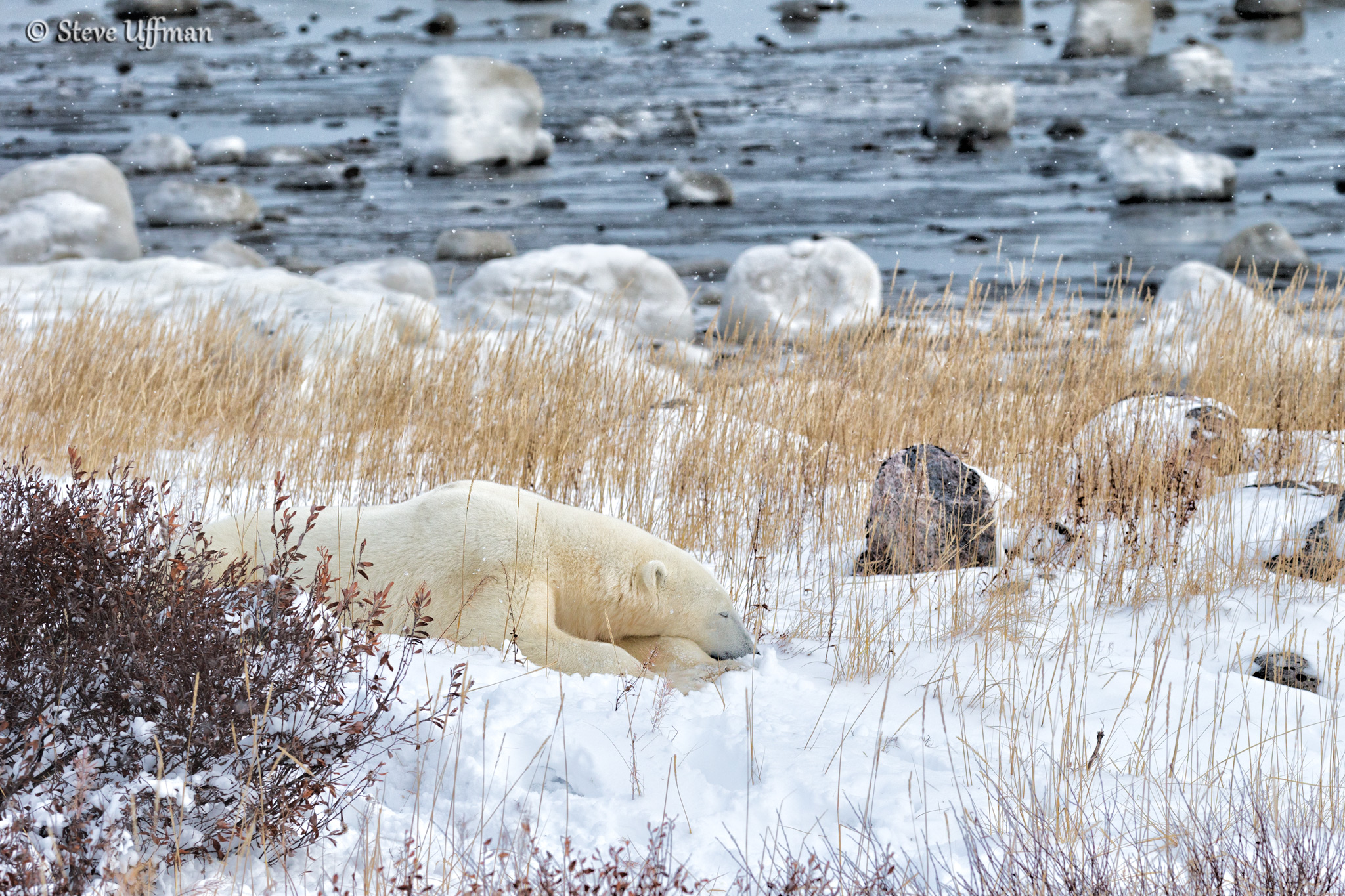
No doubt this bear is taking a quick nap-dreaming of the bay freezing over-when getting to those sumptuous, fattening seals will be far easier. It won’t be long now, so in the meantime, rest while you can.
After its brief nap, the bear moved on but still provided us with numerous photo opportunities that will soon go up on our website. We certainly enjoyed our first encounter with the bear that afternoon and looked forward to more encounters the rest of our days there. Of course, we noticed the Arctic foxes running around like crazy which gave us unprecedented photo opportunities-but I will save those for another report.
How can you discuss the far north without commenting on the weather?
Temperature at this time was a balmy -17F with wind. Marian and I had put on all our cold weather gear being uncertain how we would handle such cold. Was not long after, that we had confidence in the layered clothing and noticed that we actually were perspiring. But always better to be safe than sorry. Of course, we still had the night time temps to photograph the Northern Lights ahead!
The next bear sighting was an enormous bear that was off aways from the camp. That brings the question, how big are polar bears? Adult males range from 775 to 1,200 pounds. Adult females are smaller, normally weighing 330 to 650 pounds. And the largest polar bear ever recorded? a male weighing 2,209 pounds. Scientists measure height of bears by measuring them at the shoulder when on all fours. Such heights range 3.5-5 feet for both male and female adult polar bears. Standing however, an adult male may reach over 10 feet on its hind legs.
This bear was quite shy and we knew that the small group of photographers would have to use stealth to get an image. Hiking with a tripod, big camera and lens, full clothing after a moving bear proved to be quite challenging. Add snow and ice and it would test our conditioning. He would stop for a moment, we would pause and get ready for a shot-and then he would move before we were in range. We followed this bear over a couple of small ridges until he stopped among the frozen slabs of ice out on the lake. My pulse no doubt quickened at the sight of the amazing, huge bear. But like before, he took off over the next ridge but did so this time with speed that I had heard about but had not seen before. Polar bears can run up to 18 mph. They also are very agile as they spread the legs and weight as needed to traverse the ice. I don’t know if he was running at top speed but seeing such a massive animal move with such speed and grace is a memory I will never forget. Good thing too as we continued our hike but never saw him again.
On another day, we began our morning with a sunrise visitor. Our guides, Andy Macpherson and Tara Ryan awakened us with the wonderful call that a bear is outside the lodge right now. A bit groggy from photographing the Northern lights the night before, we still put on layers of clothing and within minutes were in the field photographing another interesting polar bear. As we tracked the bear coming closer to camp, Marian saw that the bear was likely going to cross a small ice bridge. One of the things I love about Marian’s photos is that she often sees things or elements that I miss. Here she saw an ice bridge and positioned herself to capture it as an element to the image. Then she waited for the bear to approach before pressing the shutter.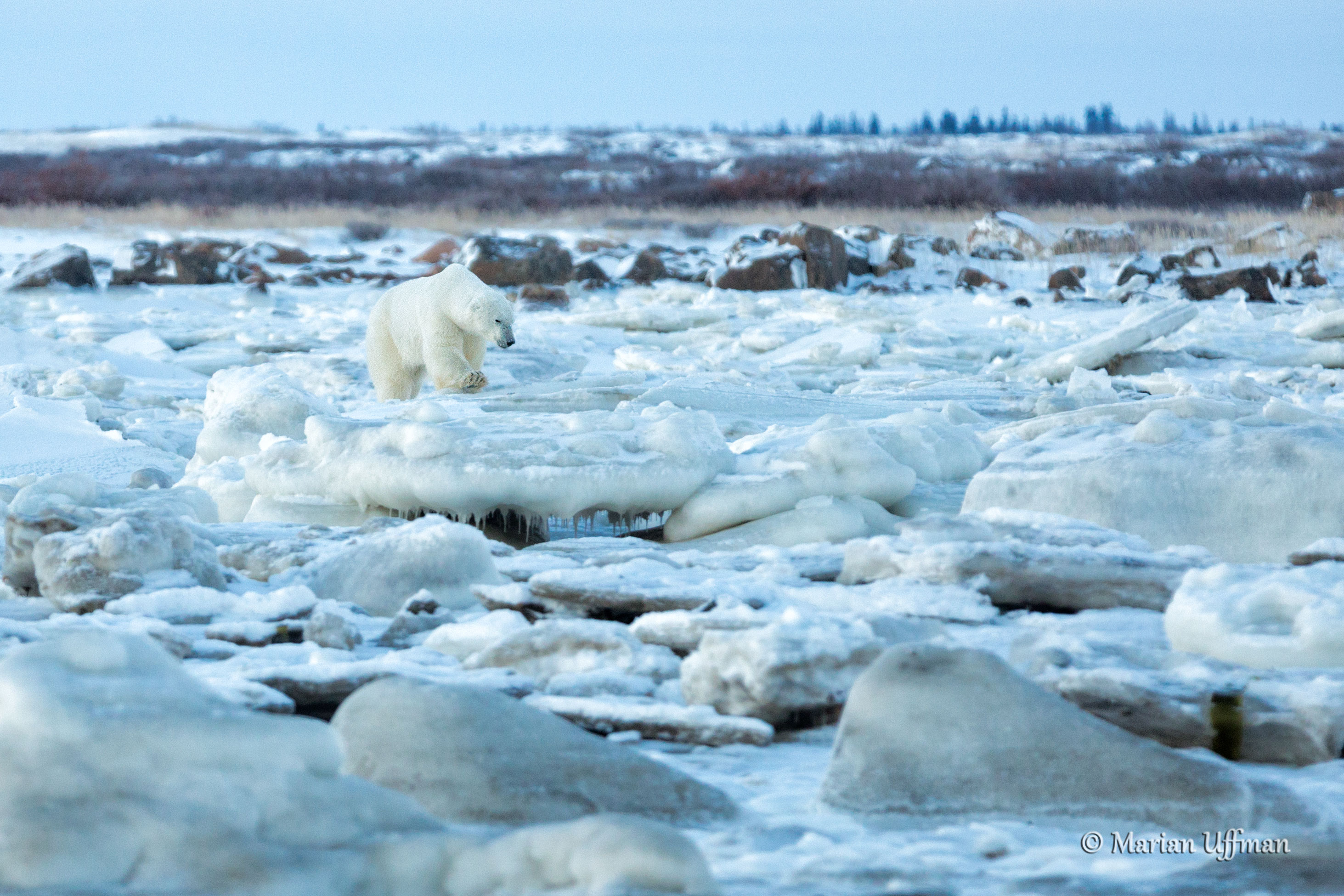
And for coming to camp around breakfast time? Likely the aromas of eggs, bacon, breads, coffee and more drew him to investigate. Perhaps he knew how extraordinary the cuisine is at Seal River Heritage Lodge. (If it was not 1960 miles away, I would be a regular just for the food alone! — at Seal River Heritage Lodge, Manitoba, Canada. In fact, the wonderful food and hospitality likely warrants a blog post on its own.)
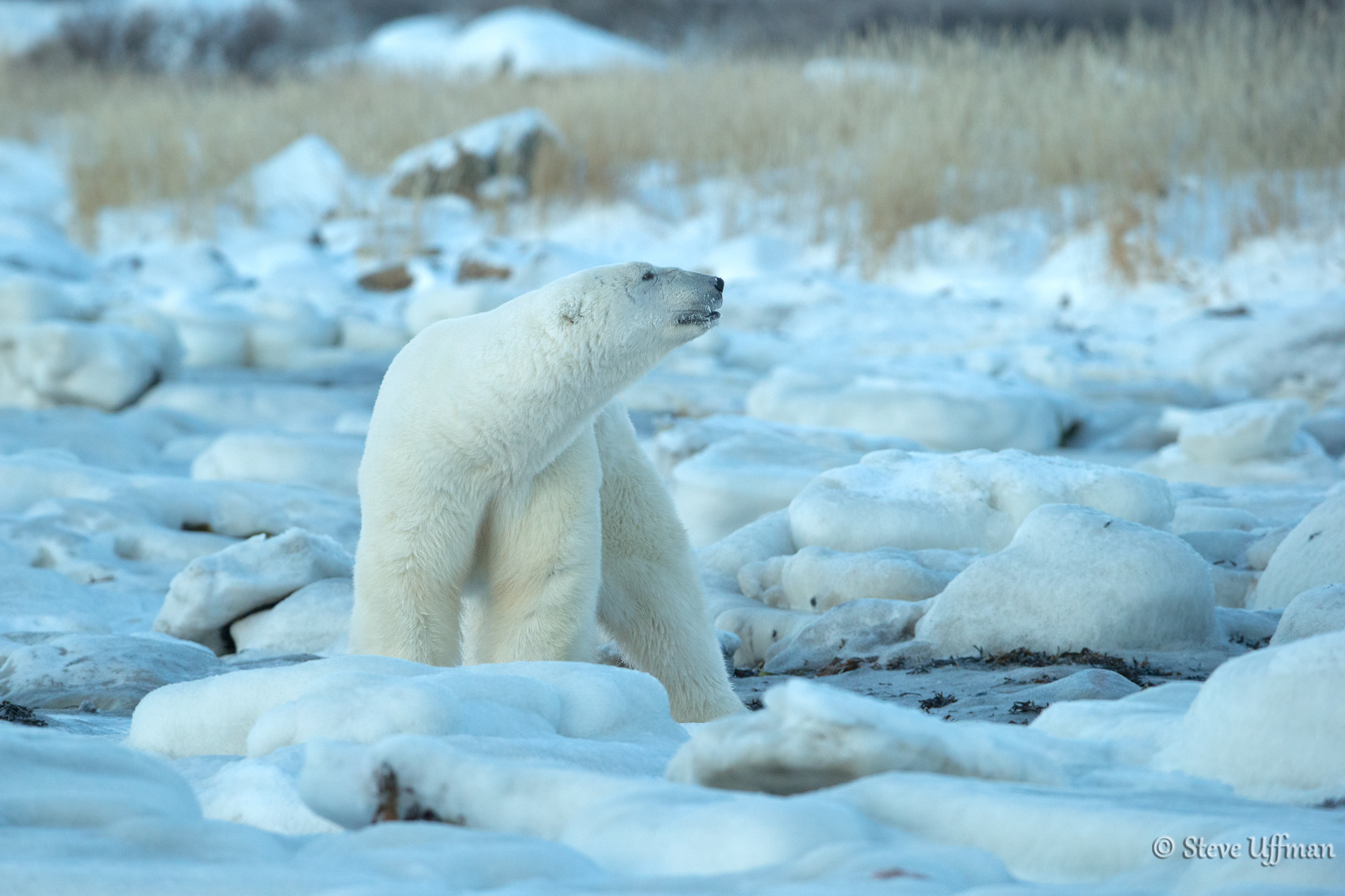 Unique about this bear is that it only had one ear. The image shows where the missing ear should have been. I wonder if the ear was lost in a battle with another bear as there are some marks around the face that likely are battle scars. Or was it missing at birth. In any case this bear was healthy and we enjoyed its ambling by our camp.
Unique about this bear is that it only had one ear. The image shows where the missing ear should have been. I wonder if the ear was lost in a battle with another bear as there are some marks around the face that likely are battle scars. Or was it missing at birth. In any case this bear was healthy and we enjoyed its ambling by our camp.
Polar bear ears by the way are smaller than other species of bears. Scientists believe that is to conserve heat.
Well, its now time to move on to editing more of our images from this trip so I can get them on our website-so bye for now. Our website design is done but I now must populate and rearrange the images we want to display. That will make for a busy winter.
Also, I do hope you will stay tuned as our next post will be on the beautiful Arctic foxes. Finally, if you like our blog, please subscribe and you will get the updates as we post. Its easy to do by clicking on the subscription area of this page. Also, sharing is good. Know someone that might like our blog, feel free to share.
For more information on Seal River Heritage Lodge click http://www.churchillwild.com/about-us/our-lodges/seal-river-heritage-lodge/
For more information on Chas Glatzer, Master Photographer http://shootthelight.com/

